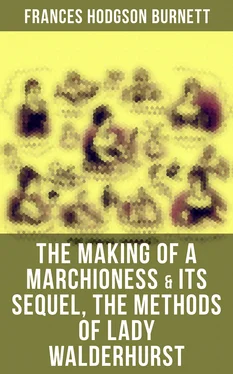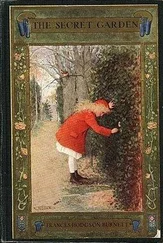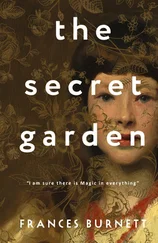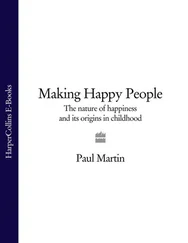Frances Hodgson Burnett
The Making of a Marchioness & Its Sequel, The Methods of Lady Walderhurst
Emily Fox-Seton (Complete Edition)
Published by

Books
- Advanced Digital Solutions & High-Quality eBook Formatting -
musaicumbooks@okpublishing.info
2017 OK Publishing
ISBN 978-80-272-3155-3
BEING “THE MAKING OF A MARCHIONESS” AND
“THE METHODS OF LADY WALDERHURST”
Table of Contents
When Miss Fox-Seton descended from the twopenny bus as it drew up, she gathered her trim tailor-made skirt about her with neatness and decorum, being well used to getting in and out of twopenny buses and to making her way across muddy London streets. A woman whose tailor-made suit must last two or three years soon learns how to protect it from splashes, and how to aid it to retain the freshness of its folds. During her trudging about this morning in the wet, Emily Fox-Seton had been very careful, and, in fact, was returning to Mortimer Street as unspotted as she had left it. She had been thinking a good deal about her dress—this particular faithful one which she had already worn through a twelvemonth. Skirts had made one of their appalling changes, and as she walked down Regent Street and Bond Street she had stopped at the windows of more than one shop bearing the sign “Ladies’ Tailor and Habit-Maker,” and had looked at the tautly attired, preternaturally slim models, her large, honest hazel eyes wearing an anxious expression. She was trying to discover where seams were to be placed and how gathers were to be hung; or if there were to be gathers at all; or if one had to be bereft of every seam in a style so unrelenting as to forbid the possibility of the honest and semi-penniless struggling with the problem of remodelling last season’s skirt at all. “As it is only quite an ordinary brown,” she had murmured to herself, “I might be able to buy a yard or so to match it, and I might be able to join the gore near the pleats at the back so that it would not be seen.”
She quite beamed as she reached the happy conclusion. She was such a simple, normal-minded creature that it took but little to brighten the aspect of life for her and to cause her to break into her goodnatured, childlike smile. A little kindness from any one, a little pleasure or a little comfort, made her glow with nice-tempered enjoyment. As she got out of the bus, and picked up her rough brown skirt, prepared to tramp bravely through the mud of Mortimer Street to her lodgings, she was positively radiant. It was not only her smile which was childlike, her face itself was childlike for a woman of her age and size. She was thirty-four and a well-set-up creature, with fine square shoulders and a long small waist and good hips. She was a big woman, but carried herself well, and having solved the problem of obtaining, through marvels of energy and management, one good dress a year, wore it so well, and changed her old ones so dexterously, that she always looked rather smartly dressed. She had nice, round, fresh cheeks and nice, big, honest eyes, plenty of mouse-brown hair and a short, straight nose. She was striking and well-bred-looking, and her plenitude of goodnatured interest in everybody, and her pleasure in everything out of which pleasure could be wrested, gave her big eyes a fresh look which made her seem rather like a nice overgrown girl than a mature woman whose life was a continuous struggle with the narrowest of mean fortunes.
She was a woman of good blood and of good education, as the education of such women goes. She had few relatives, and none of them had any intention of burdening themselves with her pennilessness. They were people of excellent family, but had quite enough to do to keep their sons in the army or navy and find husbands for their daughters. When Emily’s mother had died and her small annuity had died with her, none of them had wanted the care of a big raw-boned girl, and Emily had had the situation frankly explained to her. At eighteen she had begun to work as assistant teacher in a small school; the year following she had taken a place as nursery-governess; then she had been reading-companion to an unpleasant old woman in Northumberland. The old woman had lived in the country, and her relatives had hovered over her like vultures awaiting her decease. The household had been gloomy and gruesome enough to have driven into melancholy madness any girl not of the sanest and most matter-of-fact temperament. Emily Fox-Seton had endured it with an unfailing good nature, which at last had actually awakened in the breast of her mistress a ray of human feeling. When the old woman at length died, and Emily was to be turned out into the world, it was revealed that she had been left a legacy of a few hundred pounds, and a letter containing some rather practical, if harshly expressed, advice.
Go back to London [Mrs. Maytham had written in her feeble, crabbed hand]. You are not clever enough to do anything remarkable in the way of earning your living, but you are so goodnatured that you can make yourself useful to a lot of helpless creatures who will pay you a trifle for looking after them and the affairs they are too lazy or too foolish to manage for themselves. You might get on to one of the second-class fashion-papers to answer ridiculous questions about housekeeping or wallpapers or freckles. You know the kind of thing I mean. You might write notes or do accounts and shopping for some lazy woman. You are a practical, honest creature, and you have good manners. I have often thought that you had just the kind of commonplace gifts that a host of commonplace people want to find at their service. An old servant of mine who lives in Mortimer Street would probably give you cheap, decent lodgings, and behave well to you for my sake. She has reason to be fond of me. Tell her I sent you to her, and that she must take you in for ten shillings a week.
Emily wept for gratitude, and ever afterward enthroned old Mrs. Maytham on an altar as a princely and sainted benefactor, though after she had invested her legacy she got only twenty pounds a year from it.
“It was so kind of her,” she used to say with heartfelt humbleness of spirit. “I never dreamed of her doing such a generous thing. I hadn’t a shadow of a claim upon her—not a shadow .” It was her way to express her honest emotions with emphasis which italicised, as it were, her outpourings of pleasure or appreciation.
She returned to London and presented herself to the ex-serving-woman. Mrs. Cupp had indeed reason to remember her mistress gratefully. At a time when youth and indiscreet affection had betrayed her disastrously, she had been saved from open disgrace and taken care of by Mrs. Maytham.
The old lady, who had then been a vigorous, sharp-tongued, middle-aged woman, had made the soldier lover marry his despairing sweetheart, and when he had promptly drunk himself to death, she had set her up in a lodging-house which had thriven and enabled her to support herself and her daughter decently.
In the second story of her respectable, dingy house there was a small room which she went to some trouble to furnish up for her dead mistress’s friend. It was made into a bed-sitting-room with the aid of a cot which Emily herself bought and disguised decently as a couch during the daytime, by means of a red and blue Como blanket. The one window of the room looked out upon a black little back-yard and a sooty wall on which thin cats crept stealthily or sat and mournfully gazed at fate.
Читать дальше













